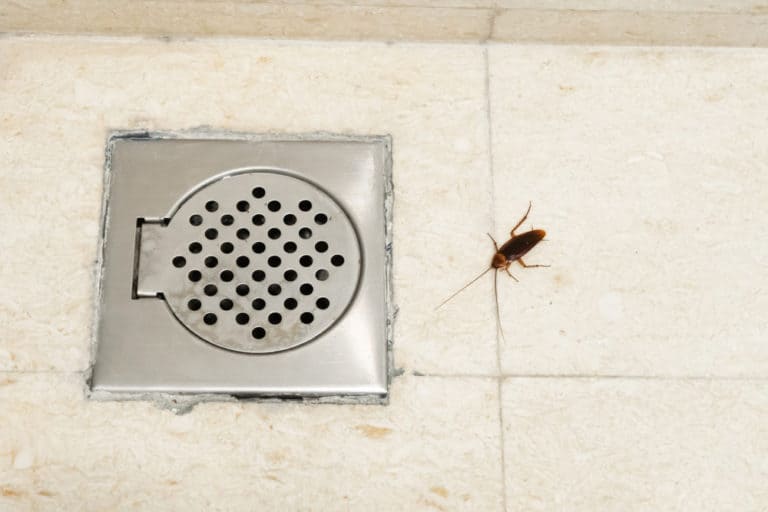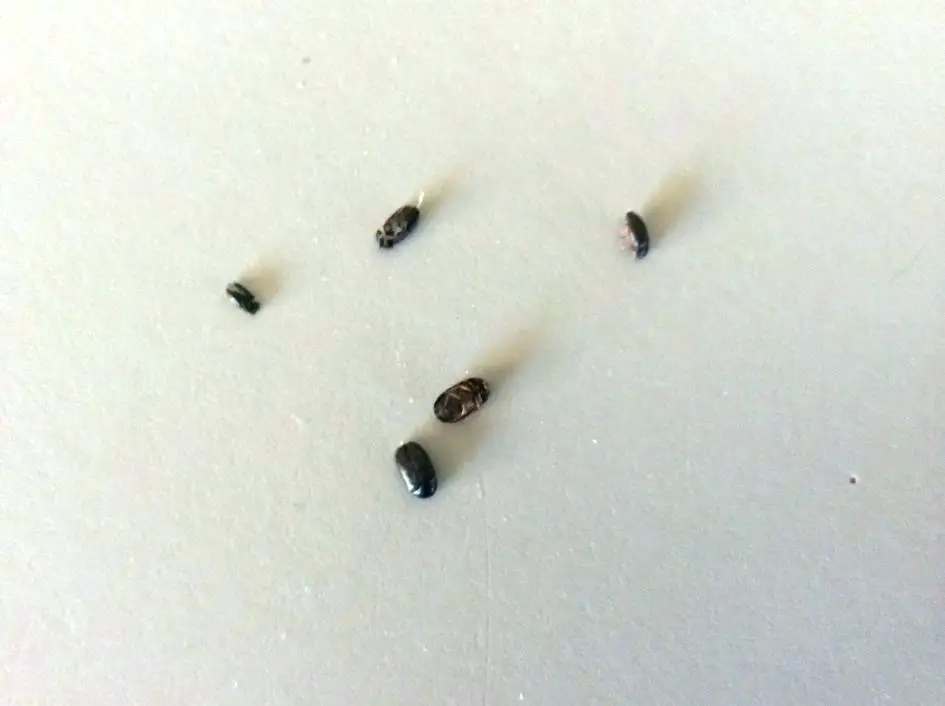Common Bathroom Pests: What Are Little Black Bugs In The Bathroom

Bathrooms, with their moisture and warmth, can be attractive to a variety of small black bugs. These tiny invaders can be a nuisance, but identifying them is crucial for effective pest control. Let’s delve into the world of these bathroom dwellers and understand their unique characteristics.
Common Bathroom Pests
Bathrooms often become a haven for several small black bugs, each with its own distinct features. Here’s a table outlining some of the most common culprits:
| Bug Name | Description | Size | Behavior |
|---|---|---|---|
| Silverfish | Silverfish are wingless insects with elongated, flattened bodies that resemble a teardrop. They have three long, thin appendages at the rear end and are covered in tiny scales that give them a silvery sheen. | ½ – ¾ inch long | Silverfish are nocturnal and prefer damp, dark places. They feed on starches, sugars, and even bookbinding glue. |
| Earwigs | Earwigs are characterized by their reddish-brown bodies and pincer-like appendages at the rear end. These appendages, called cerci, are used for defense and mating. | ½ – 1 inch long | Earwigs are omnivorous and prefer moist environments. They are known for their nocturnal habits and can be found hiding in crevices and under objects. |
| Springtails | Springtails are tiny insects with a unique forked appendage that allows them to jump. They are typically gray or brown in color and have a segmented body. | 1/16 – 1/8 inch long | Springtails are found in damp, humid environments, such as bathrooms and basements. They feed on decaying organic matter and are not known to bite or cause harm. |
| Centipedes | Centipedes have elongated, segmented bodies with numerous pairs of legs. They are typically brown or gray in color and have a flattened body shape. | ½ – 4 inches long | Centipedes are carnivorous and prey on other insects. They are nocturnal and prefer dark, moist places. |
Sources of Infestation

The presence of little black bugs in your bathroom can be a source of frustration and concern. Understanding the sources of infestation is crucial for effective control and prevention. Several factors contribute to their presence in this specific environment.
Moisture and Humidity
Bathrooms are naturally prone to moisture and humidity due to showers, baths, and general use. This damp environment creates an ideal breeding ground for various insects, including:
- Silverfish: These small, wingless insects thrive in humid environments and are often found in bathrooms, kitchens, and laundry rooms.
- Springtails: These tiny, jumping insects are attracted to damp conditions and are commonly found in bathrooms, basements, and crawl spaces.
- Centipedes: These elongated, segmented insects are attracted to moisture and often seek refuge in bathrooms, particularly during dry seasons.
High humidity levels also encourage the growth of mold and mildew, which can attract certain types of insects.
Food Sources
While bathrooms may not seem like a food paradise, various sources can attract insects:
- Hair and skin: These are natural food sources for some insects, particularly carpet beetles, which are often found in bathrooms.
- Soap and toothpaste: The residue left behind from these products can attract certain insects, such as fruit flies.
- Food particles: Even small food crumbs or spills left unattended can attract insects, especially ants and cockroaches.
Even seemingly insignificant food sources can entice insects to seek refuge in your bathroom.
Entry Points
Bathrooms often have several potential entry points for insects:
- Open windows and doors: These are obvious entry points for insects, especially during warm weather.
- Cracks and crevices: Small cracks and crevices around windows, doors, and plumbing fixtures can provide access for insects.
- Drains: Bathroom drains can be entry points for insects, especially if they are not properly sealed or maintained.
It is essential to seal any gaps or cracks to prevent insects from entering your bathroom.
Other Household Pests
Infestations of other household pests can also lead to bathroom bug problems:
- Ants: Ants often follow trails to food sources, which can lead them into bathrooms.
- Cockroaches: Cockroaches are attracted to moisture and food sources and can easily enter bathrooms through cracks and crevices.
Controlling infestations of other household pests is crucial for preventing bathroom bug problems.
Prevention and Control

Preventing and controlling bathroom bug infestations is crucial for maintaining a clean and healthy living environment. This involves proactive measures to eliminate existing infestations and establish a barrier against future occurrences.
Effective Methods for Eliminating Existing Infestations
Eliminating existing infestations requires a multi-pronged approach, addressing both the immediate problem and preventing future recurrence.
- Identify the source of infestation: Identifying the source of infestation is crucial to effectively target the problem. For example, if you suspect drain flies, you may need to address drainage issues.
- Thorough cleaning: Regularly cleaning the bathroom is essential, especially areas prone to moisture buildup. This includes wiping down surfaces, scrubbing the shower or bathtub, and cleaning the toilet bowl.
- Use appropriate insecticides: Insecticides can be effective in eliminating existing infestations, but choosing the right type is important. For example, sprays can be used for crawling insects, while foggers are better for flying insects.
- Consider professional pest control: If the infestation is severe or you are unable to eliminate it yourself, contacting a professional pest control service is recommended.
Tips for Keeping Bathrooms Clean and Dry
Maintaining a clean and dry bathroom is crucial for preventing bug infestations.
- Regularly clean and dry surfaces: This includes wiping down countertops, sinks, and floors after each use, as well as cleaning the shower or bathtub after each use.
- Keep drains clean and clear: Clogged drains can provide breeding grounds for insects, so ensure they are clear and clean.
- Fix leaks promptly: Leaky pipes and faucets can create dampness, which attracts insects. Repair any leaks as soon as possible.
- Use a dehumidifier: If your bathroom is prone to humidity, using a dehumidifier can help reduce moisture levels and make it less attractive to insects.
- Proper ventilation: Ensure adequate ventilation in your bathroom, using a fan during and after showers.
Importance of Sealing Cracks and Crevices, What are little black bugs in the bathroom
Sealing cracks and crevices in your bathroom is a crucial step in preventing bug infestations.
- Inspect for cracks and crevices: Look for cracks in the walls, floors, and around pipes.
- Seal cracks with caulk: Use a high-quality caulk to seal any cracks or gaps you find.
- Install door sweeps: Install door sweeps to prevent bugs from entering your bathroom from under the door.
Appropriate Pest Control Solutions for Each Type of Bug
The type of pest control solution required depends on the specific type of bug you are dealing with.
- Silverfish: Silverfish prefer damp and dark areas. To control them, use dehumidifiers, seal cracks and crevices, and use insecticides specifically formulated for silverfish.
- Drain flies: Drain flies are attracted to drains with standing water. To control them, clean drains regularly, use drain cleaners, and seal cracks and crevices.
- Centipedes: Centipedes are attracted to moist areas. To control them, keep your bathroom dry, seal cracks and crevices, and use insecticides specifically formulated for centipedes.
What are little black bugs in the bathroom – Those little black bugs in the bathroom? They’re probably drain flies, attracted to the dampness and grime. While you’re dealing with those pesky critters, why not give your bathroom a stylish upgrade with some sleek bathroom hardware sets matte black ?
They’ll add a touch of modern elegance and help you forget about those pesky bugs, at least for a while.
Those tiny black bugs in your bathroom might be a sign of a moisture problem, which is something you might want to consider when planning your next bathroom remodel. A sleek and stylish 30 inch black bathroom vanity can be a great addition to a modern bathroom, but make sure to address any potential moisture issues before installing it.
After all, you don’t want your new vanity to become a breeding ground for those little black bugs.
